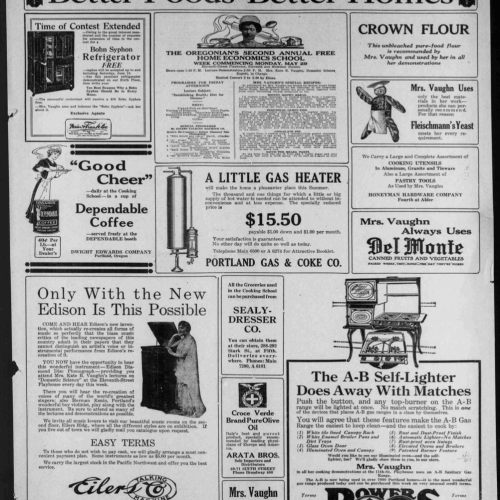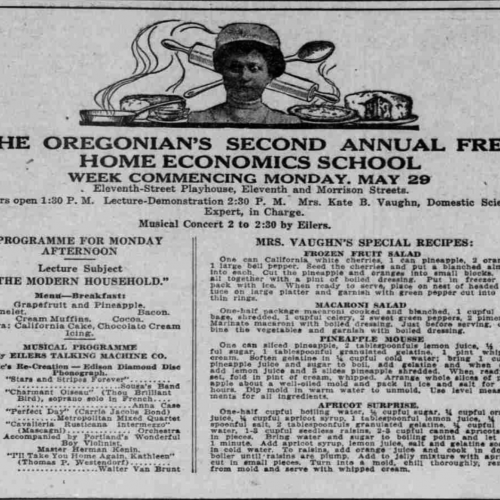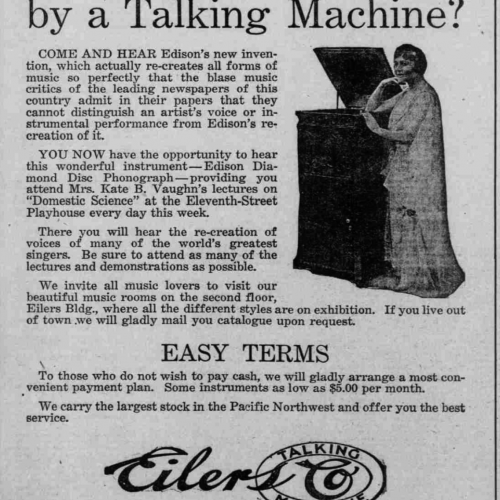On April 1, 1911, George L. Baker opened his $75,000 theatre, the 11st. Playhouse, which seated 1400 people and was located on 11st. and Morrison in Portland, Oregon (1). In June of 1916, four years after the theatre had opened, an advertisement was listed on the Morning Oregonian. This advertisement announced “The Oregonian’s Second Annual Free Home Economics School (2).” After researching this theatre I found another newspaper advertisement announcing the first ever annual home economics school at the same theatre. The advertisement gives the times of the free class, on Monday afternoon, doors open at 1:30pm and the lecture demonstrations begins at 2:30pm (2). The add also mentions who will be giving the lecture, Mrs. Kate B. Vaughn, and it lists that she is a Domestic Science Expert (2). Another interesting detail on the advertisement was the list of recipes that Mrs. Vaughn’s was going to demonstrate. Lastly, this advertisement also mentions some other musical performances it will be showing that same Monday afternoon.
This advertisement for the Home Economics course was not however the only advertisement on the page from The Morning Oregonian. Refrigerators for $50, a coffee booth, a small gas heater, a dresser company, and so on. With all of these other advertisements, the one for the home economics course was one of the largest on the page, right in the center at the top of the page with a photograph to go with (2). Another thing to note is that the advertisement for this course is not on a page of the newspaper with articles, it appears to be printed on an all advertisement page for things, specifically women, use in their home. Thus the audience is most likely aimed towards women who take care of daily household things like cooking.
What makes all of this so intriguing and weird is that on the lower left hand side of the newspaper is a an advertisement promoting Edison’s new Diamond Disc Phonograph. The performance for this new instrument can be heard during the Home Economics Course, and thus you must attend to hear this new technology. I find it interesting that the promotion of a phonograph is used to promote a home economics lecture in a theatre. The fact that this course, or lecture, is free and has been done for the second year in a row must mean it was a success the year before. Although this type of event brings no money initially to the theatre, it brings the audience an experience and establishes the theatre as part of the community. There could however, be money coming from the performance of the Diamond Disc Phonograph. If the owner of the instrument wanted to be heard there could have been some agreement made. Overall, this event creates a community, specifically catered toward women to better themselves.
Citations
- “Baker Will Build,” The Sunday Oregonian, April 03, 1910: 3. Historic Oregon Newspaper.
- “The Oregonian’s Second Annual Free Home Economics School,” The Morning Oregonian, June 02, 1916: 11. Historic Oregon Newspaper.


